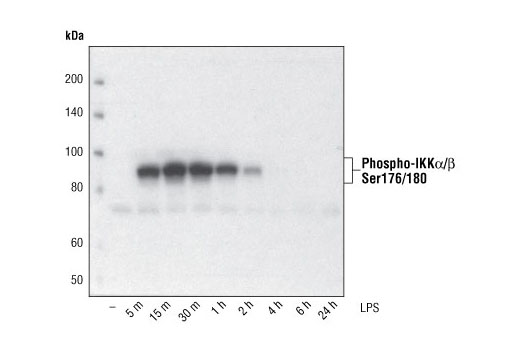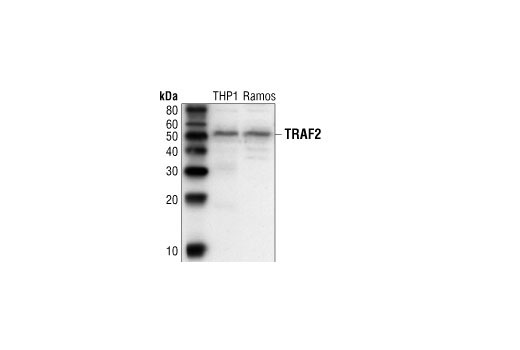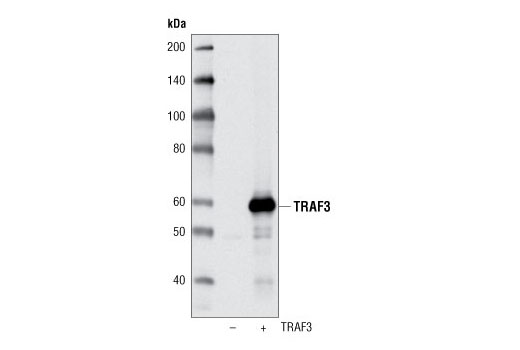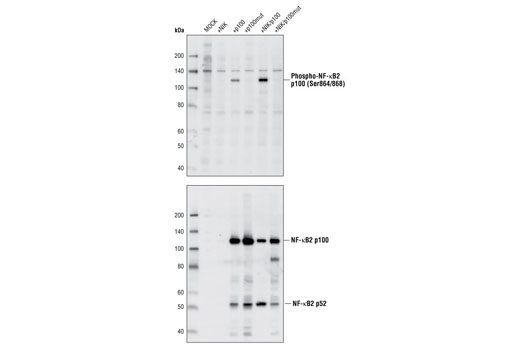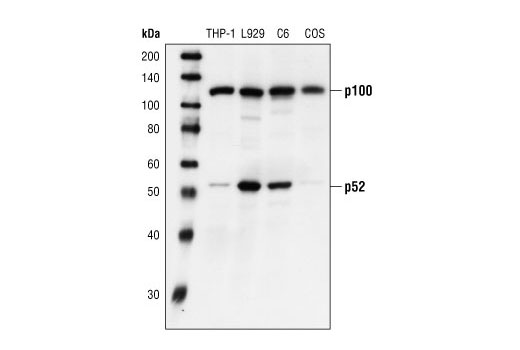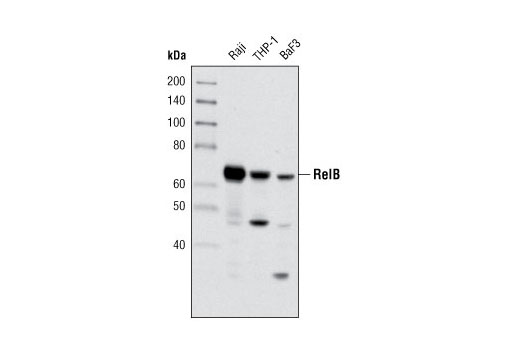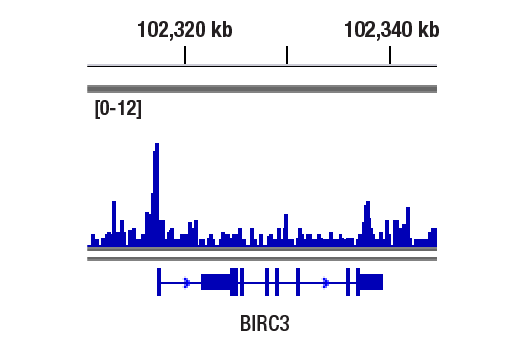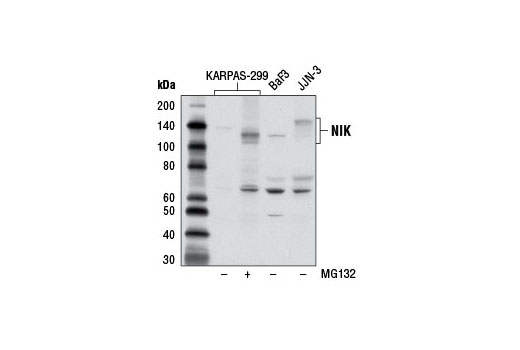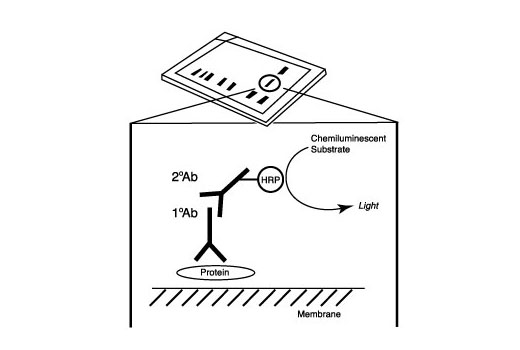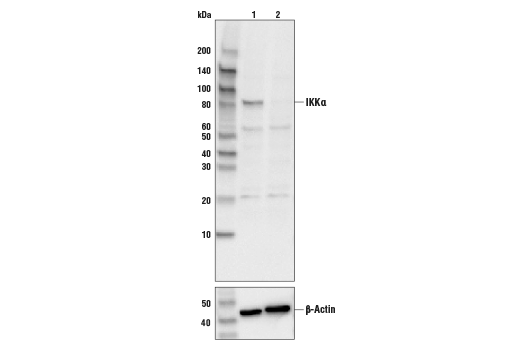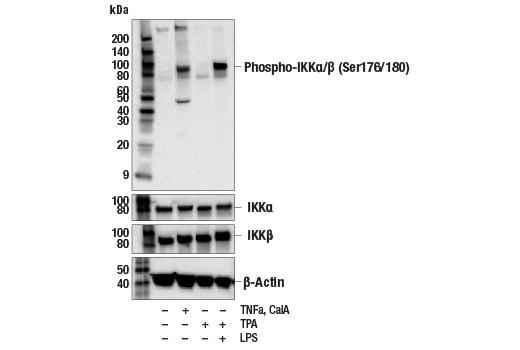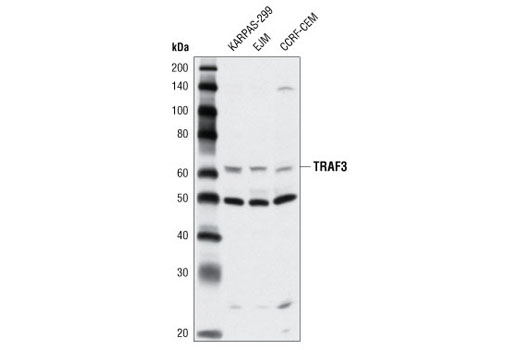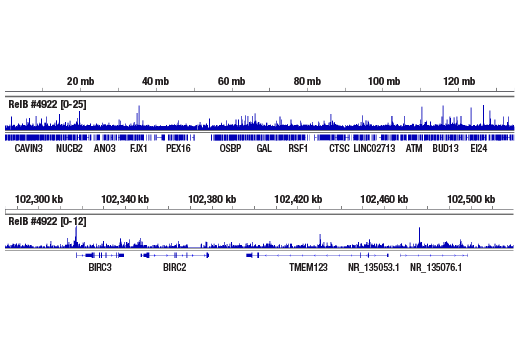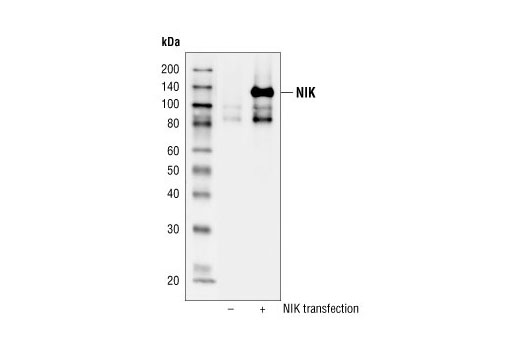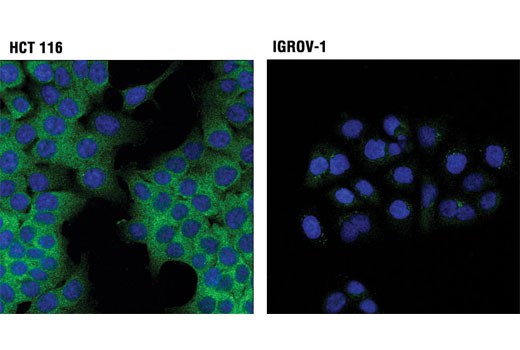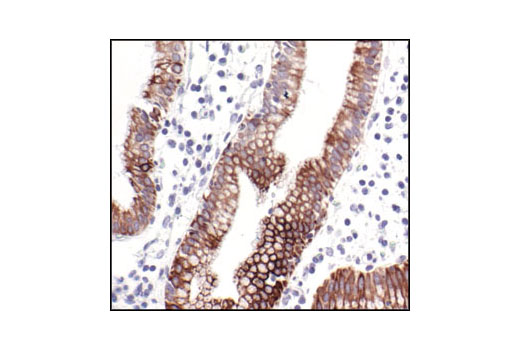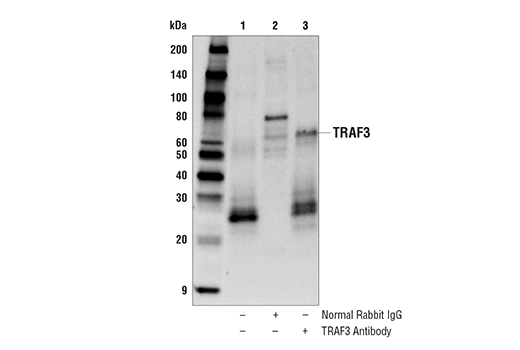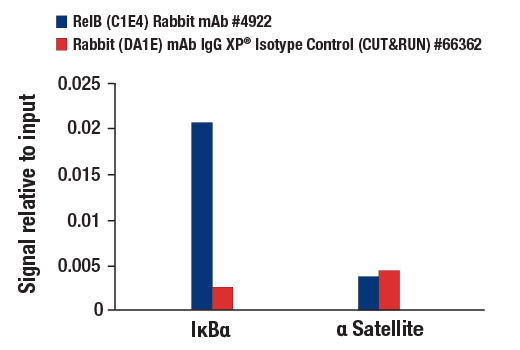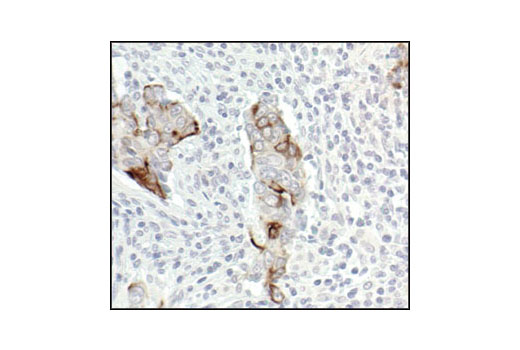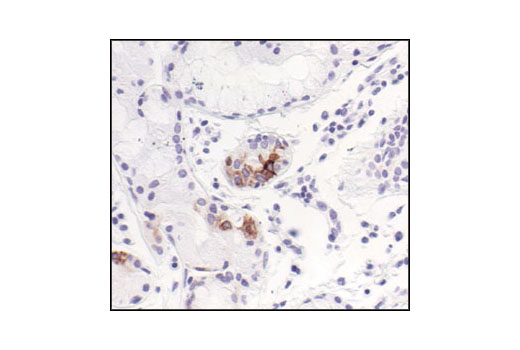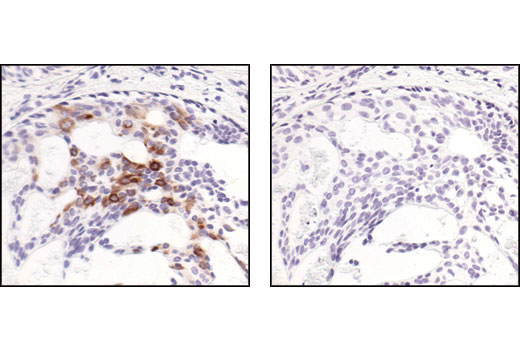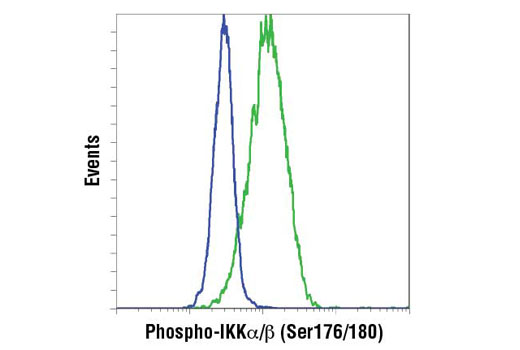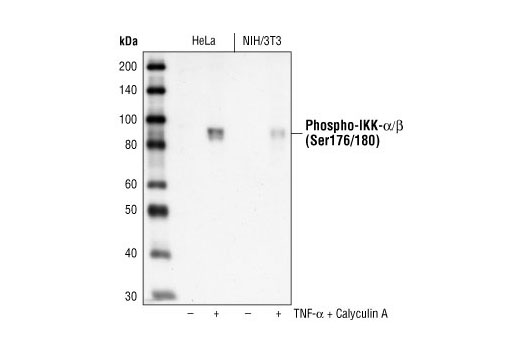| Product Includes | Product # | Quantity | Mol. Wt | Isotype/Source |
|---|---|---|---|---|
| Phospho-IKKα/β (Ser176/180) (16A6) Rabbit mAb | 2697 | 20 µl | 85 IKK-alpha 87 IKK-beta kDa | Rabbit IgG |
| IKKα (3G12) Mouse mAb | 11930 | 20 µl | 85 kDa | Mouse IgG1 |
| Phospho-NF-κB2 p100 (Ser866/870) Antibody | 4810 | 20 µl | 110 kDa | Rabbit |
| NF-κB2 p100/p52 Antibody | 4882 | 20 µl | 52 (mature). 120 (precursor). kDa | Rabbit |
| NIK Antibody | 4994 | 20 µl | 125 kDa | Rabbit |
| RelB (C1E4) Rabbit mAb | 4922 | 20 µl | 70 kDa | Rabbit IgG |
| TRAF2 Antibody | 4712 | 20 µl | 53 kDa | Rabbit |
| TRAF3 Antibody | 4729 | 20 µl | 62 kDa | Rabbit |
| Anti-rabbit IgG, HRP-linked Antibody | 7074 | 100 µl | Goat | |
| Anti-mouse IgG, HRP-linked Antibody | 7076 | 100 µl | Horse |
Please visit cellsignal.com for individual component applications, species cross-reactivity, dilutions, protocols, and additional product information.
Description
This kit contains reagents to examine the activation state and total protein levels of key components in the noncanonical NF-κB pathway: TRAF2, TRAF3, NIK, IKKα, p100, and RelB.
Storage
Background
Transcription factors of the nuclear factor κB (NF-κB)/Rel family play a pivotal role in inflammatory and immune responses (1,2). There are five family members in mammals: RelA, RelB, c-Rel, NF-κB1 (p105/p50) and NF-κB2 (p100/p52). Both p105 and p100 are proteolytically processed by the proteasome to produce p50 and p52, respectively. The p50 and p52 products form dimeric complexes with Rel proteins. While p50 associates with many of the NF-κB family members, p52 tends to form dimers primarily with RelB. A plethora of stimuli such TNFα and LPS induce the canonical NF-κB pathway, characterized by the activation of the classical IκB Kinase (IKK) complex (containing IKKα, IKKβ, IKKγ, and ELKS), which then phosphorylates inhibitory IκB molecules, targeting them for rapid degradation through a ubiquitin-proteasome pathway (3).
The noncanonical pathway, triggered by BAFF, CD40L, and certain other stimuli, is based on the inducible phosphorylation and proteasome-mediated partial degradation of NF-κB2 p100 to p52, a process regulated by the NF-κB Inducing Kinase (NIK) and IKKα, but not IKKβ or IKKγ (4-6). NIK phosphorylates IKKα at Ser176/180 (6) and p100 at Ser866/870, then recruits IKKα to p100 where IKKα phosphorylates additional residues in the N- and C-terminus (8), leading to the ubiquitination and processing of p100 (9). The TNF Receptor Associated Factor molecules TRAF2 and TRAF3 have been shown to be negative regulators of the noncanonical pathway (10, 11), and their differential binding to receptors may also play a role in determining whether transduced signals activate the canonical pathway, noncanonical pathway, or both (12). TRAF3 promotes the rapid turnover of NIK in resting cells, and its activation-induced degradation is a key regulatory point in the pathway (13). This pathway is required for B cell maturation and activation, proper architecture of peripheral lymphoid tissue, and safeguards against autoimmunity (14).
- Baeuerle, P.A. and Henkel, T. (1994) Annu Rev Immunol 12, 141-79.
- Baeuerle, P.A. and Baltimore, D. (1996) Cell 87, 13-20.
- Ghosh, S. and Karin, M. (2002) Cell 109 Suppl, S81-96.
- Xiao, G. et al. (2001) Mol Cell 7, 401-9.
- Senftleben, U. et al. (2001) Science 293, 1495-9.
- Xiao, G. et al. (2001) EMBO J 20, 6805-15.
- Ling, L. et al. (1998) Proc Natl Acad Sci USA 95, 3792-7.
- Xiao, G. et al. (2004) J Biol Chem 279, 30099-105.
- Liang, C. et al. (2006) Cell Signal 18, 1309-17.
- Xia, Z.P. and Chen, Z.J. (2005) Sci STKE 2005, pe7.
- Liao, G. et al. (2004) J Biol Chem 279, 26243-50.
- Morrison, M.D. et al. (2005) J Biol Chem 280, 10018-24.
- Qing, G. et al. (2005) J Biol Chem 280, 40578-82.
- Xiao, G. et al. (2006) Cytokine Growth Factor Rev 17, 281-93.
Background References
Trademarks and Patents
使用に関する制限
法的な権限を与えられたCSTの担当者が署名した書面によって別途明示的に合意された場合を除き、 CST、その関連会社または代理店が提供する製品には以下の条件が適用されます。お客様が定める条件でここに定められた条件に含まれるものを超えるもの、 または、ここに定められた条件と異なるものは、法的な権限を与えられたCSTの担当者が別途書面にて受諾した場合を除き、拒絶され、 いかなる効力も効果も有しません。
研究専用 (For Research Use Only) またはこれに類似する表示がされた製品は、 いかなる目的についても FDA または外国もしくは国内のその他の規制機関により承認、認可または許可を受けていません。 お客様は製品を診断もしくは治療目的で使用してはならず、また、製品に表示された内容に違反する方法で使用してはなりません。 CST が販売または使用許諾する製品は、エンドユーザーであるお客様に対し、使途を研究および開発のみに限定して提供されるものです。 診断、予防もしくは治療目的で製品を使用することまたは製品を再販売 (単独であるか他の製品等の一部であるかを問いません) もしくはその他の商業的利用の目的で購入することについては、CST から別途許諾を得る必要があります。 お客様は以下の事項を遵守しなければなりません。(a) CST の製品 (単独であるか他の資材と一緒であるかを問いません) を販売、使用許諾、貸与、寄付もしくはその他の態様で第三者に譲渡したり使用させたりしてはなりません。また、商用の製品を製造するために CST の製品を使用してはなりません。(b) 複製、改変、リバースエンジニアリング、逆コンパイル、 分解または他の方法により製品の構造または技術を解明しようとしてはなりません。また、 CST の製品またはサービスと競合する製品またはサービスを開発する目的で CST の製品を使用してはなりません。(c) CST の製品の商標、商号、ロゴ、特許または著作権に関する通知または表示を除去したり改変したりしてはなりません。(d) CST の製品をCST 製品販売条件(CST’s Product Terms of Sale) および該当する書面のみに従って使用しなければなりません。(e) CST の製品に関連してお客様が使用する第三者の製品またはサービスに関する使用許諾条件、 サービス提供条件またはこれに類する合意事項を遵守しなければなりません。

